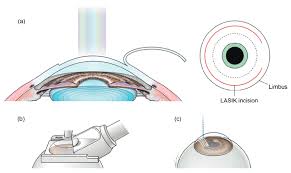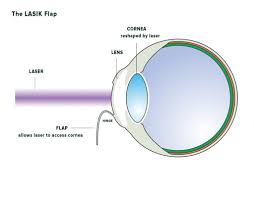Table of Contents
ToggleTo achieve a clear vision, contemporary ophthalmology has seen extraordinary progress, providing diverse surgical solutions for rectifying refractive anomalies. Among these, Smile Pro eye surgery has emerged as a pioneering procedure that has garnered significant attention recently. As a newer alternative to more traditional forms of laser eye surgery, it has generated considerable interest for its minimally invasive nature and quick recovery time.
Despite its burgeoning popularity, however, many prospective patients find themselves asking a crucial question: Is Smile Pro Eye surgery permanent? This article aims to answer that query, providing a comprehensive overview of the permanence and long-term effects of Smile Pro Eye surgery.
The Mechanics of Smile Pro Eye Surgery
Smile Pro eye surgery, also known as Small Incision Lenticule Extraction, is a cutting-edge ophthalmological procedure that rectifies refractive errors by reshaping the cornea. Unlike traditional LASIK or PRK procedures that involve creating a large flap on the eye, Smile Pro surgery is minimally invasive, requiring only a small incision. It is made possible through a femtosecond laser, which creates a tiny lenticule (disc of tissue) within the cornea that is removed, thereby altering the cornea’s shape and correcting the refractive error. The significance of this approach lies in its precision and the reduced risk of complications, as most of the cornea remains untouched.
Clinical Studies and Success Rates
A critical aspect of evaluating any medical procedure’s efficacy is the wealth of data from rigorous clinical studies. Smile Pro eye surgery has been subject to extensive research, with outcomes that underscore its effectiveness in achieving improved vision.
Numerous clinical trials have been conducted to assess the safety and efficacy of Smile Pro surgery across a diverse patient population. These studies employ meticulous methodologies to measure visual acuity, assess patient satisfaction, and monitor potential side effects. The success rates of Smile Pro eye surgery have consistently demonstrated high levels of patient satisfaction and significant improvements in visual clarity.
In these studies, most patients reported a substantial reduction in their dependence on corrective eyewear or complete freedom from it altogether. The meticulous design and execution of these trials provide a robust foundation for understanding the reliability and predictability of Smile Pro eye surgery.
Research indicates that over 90% of patients achieve 20/20 vision or better post-procedure, with a patient satisfaction rate exceeding 95%. Furthermore, complications, such as dry eyes and nighttime glare, are remarkably lower compared to traditional LASIK procedures. These statistics underline the effectiveness of Smile Pro surgery and its potential for long-term success.
Longevity of Smile Pro Eye Surgery Results
Post-operative data suggests that the vision correction achieved through Smile Pro surgery is stable over time. Patients report maintaining their improved visual acuity years after the procedure.
The regression rate, the likelihood of vision reverting to pre-surgery status, is significantly low for Smile Pro surgery. It is a testament to the procedure’s long-term effectiveness and ability to provide patients with lasting visual clarity.
However, it’s crucial to understand that individual factors such as age and refractive stability may influence these results. Therefore, while Smile Pro eye surgery offers a more permanent solution for vision correction compared to conventional methods, the extent of its permanence can vary from patient to patient.
Potential Factors Affecting Permanence
While SmilePro eye surgery is generally considered a long-lasting solution for vision correction, several factors can potentially influence its permanence:
Age:
The stability of your vision prescription plays a significant role in the longevity of the surgery’s effects. Younger individuals whose eyes are still changing may experience a regression in their vision correction over time.
Eye Health:
The overall health of your eyes is critical for the success and longevity of any eye surgery. Pre-existing eye conditions or diseases, such as glaucoma or cataracts, may impact the long-term results of Smile Pro eye surgery.
Surgeon’s Skill and Experience:
The expertise and precision of the surgeon performing the procedure can significantly influence the outcome and long-term stability of the surgery. Choosing a highly skilled and experienced surgeon is essential for achieving the best possible results.
Postoperative Care:
Following the postoperative instructions provided by your surgeon is critical for optimal healing and long-lasting results. Proper care Should be done, including using prescribed eye drops and avoiding strenuous activities, to contribute to the permanence of the surgery.
Lifestyle Changes:
Certain lifestyle factors, such as pregnancy or hormonal changes, can affect the stability of your vision correction. It’s important to discuss any potential life changes with your surgeon to understand how they may impact the permanence of the procedure.
Natural Aging Process:
As we age, our eyes naturally change. It can include changes in the shape of the cornea, which may lead to a slight regression in vision correction over time. However, the effects of Smile Pro eye surgery typically remain stable for many years.
Addressing Changes: Revisions and Enhancements
After undergoing Smile Pro eye surgery, some patients may experience changes in their visual acuity over time. Various factors, such as natural aging processes or shifts in ocular health, could influence these changes. However, rest assured that established protocols are in place to address these changes and optimize vision further.
Secondary Procedures for Fine-Tuning
Secondary procedures refer to follow-up interventions to enhance or refine the results achieved through the initial Smile Pro surgery. These procedures are designed to address any residual refractive errors or changes in vision that may have occurred since the initial surgery. For instance, if a patient’s vision has regressed or desires further improvement, a secondary procedure can be performed to fine-tune the visual outcome.
Protocols for Adjusting Vision if Necessary
Ophthalmologists and surgical teams have established specific guidelines and protocols to evaluate and, if necessary, adjust the vision of a patient who has undergone Smile Pro surgery. These protocols consider various factors, including the nature of the visual changes, the stability of the patient’s ocular health, and the time elapsed since the initial procedure. By adhering to these protocols, ophthalmologists can make precise adjustments to optimize the patient’s visual clarity and ensure they enjoy enhanced vision benefits.
Conclusion
Smile Pro eye surgery is a highly advanced, precise, and effective procedure for correcting common refractive errors in the eye. Its minimally invasive approach, high success rates, and potential for long-term results make it a preferred option for many patients seeking improved vision. However, as with any medical procedure, it’s essential to understand the potential factors that may impact its permanence and have realistic expectations. With proper care and follow-up protocols, you can enjoy clear vision for years with Smile Pro eye surgery.













